‘This is a tree of life.’ Pani Olga’s fingers traced the embroidery on a rushnyk depicting a fantastical plant. From its branches sprouted opulent blossoms. ‘It means that the embroiderer dreamed of a long life and a big family.’
‘This is Beregynya, a safe keeper.’ Pani Olga drew my attention to a figure, ample of hip and bosom, holding branches laden with grapes and flowers. ‘It was embroidered by someone to protect a loved one from harm.’ The image had none of the Orthodox sobriety and harkened back to the old animistic religion of the Slavs, who worshipped the spirits of plants, animals, birds and rocks.
From The Rooster House
A simple piece of cloth can hold a wealth of meaning. Rushnyk (plural: rushnyky) is a traditional Ukrainian ritual cloth, intricately adorned with symbolic patterns and motifs. Although at its most basic, a rushnyk is a hand towel, the word evokes much more to a Ukrainian. These cloths hold significant cultural and spiritual value in Ukrainian heritage, representing a blend of art, tradition, and identity. During much of Ukraine’s history, when expressing thoughts freely had dangerous consequences, a rushnyk served as a repository of encoded messages. It could be a declaration of love, celebration of freedom or of a yearning for escape.
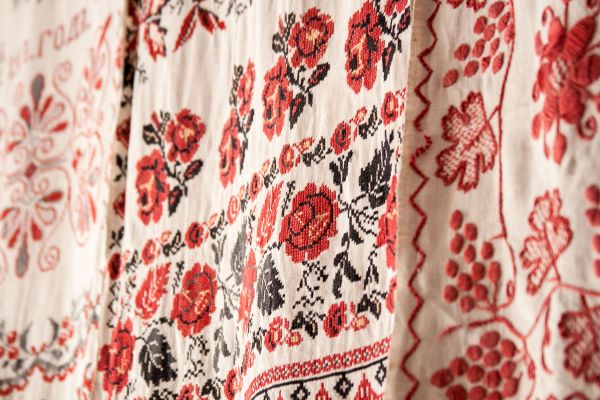
Reading these secret messages in the embroideries on rushnyky became my obsession during my trips to Ukraine. I had a wonderful teacher and a partner on this quest, a lady I met at our local church in Poltava. Pani Olga plays an important role in my book The Rooster House, especially because of her knowledge about rushnyky and traditional arts. Thread by thread I unraveled the family mystery and became an avid lover of rushnyky embroideries.
At home we had many rushnyky made by my great-grandmother Asya. Some were made of thin linen and had delicate bands of flowers. I loved using them to dry my face, because a cloth sundried in the sun felt warm and smelled of lavender water and iris petals. This scent was particular to Asya’s linens, probably because she stored them in a vast cupboard stocked with soap.
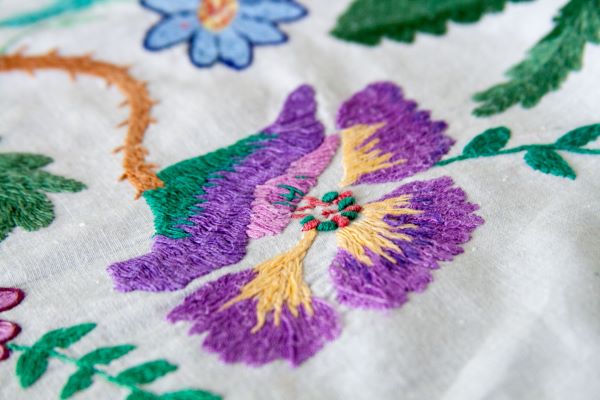
Rushnyky with heavy embroideries were used for special events. In Ukraine, births, weddings, and funerals require rushnyky. A new-born is received into a rushnyk. A richly adorned cloth binds a new couple. A long unembellished rushnyk lowers a coffin into the ground. Rushnyky symbolize protection, blessings, and the connection between the human and the divine, and while our household was non-religious, we respected the special sacred function of this embroidered cloth.
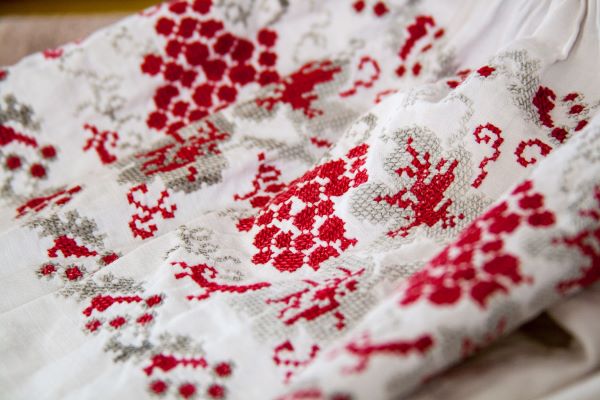
I began to understand the patterns on rushnyky only when I met Pani Olga. As she explained, the designs on rushnyky are rich with symbolism. Common motifs include geometric patterns, floral designs, and representations of birds, trees, and other natural elements. Each symbol carries specific meanings. For instance, the Tree of Life represents fertility and the connection between the earthly and the spiritual. Birds embody the meaning of freedom, and harmony. Flowers and plants represent beauty, prosperity, and the cycle of life.
Even the colors used in the embroidery can hold symbolic meaning. Red, for instance, is often used to bring good fortune and ward off evil. As in many Asian cultures, it’s the color of life and sun, and Ukrainian embroidery is particularly rich in it. Black can mean the duality of happiness and suffering, life and death. It can also symbolize the earth and roots.
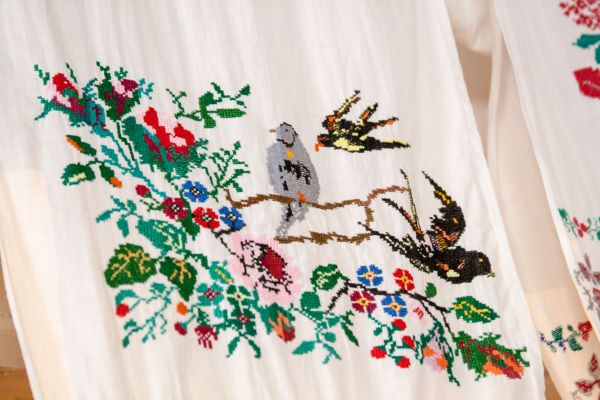
Every region of Ukraine has its own distinct style of rushnyky, with variations in patterns, colors, and embroidery techniques. My family’s region of Poltava, central Ukraine, is known for its white-on-white embroidery, symbolizing purity and simplicity. Chernihiv region in northern Ukraine is known for its elaborate and colorful patterns with a high level of detail. The Hutsul region in the Carpathian mountains of western Ukraine is recognized for its bright colors and complex, geometric designs.
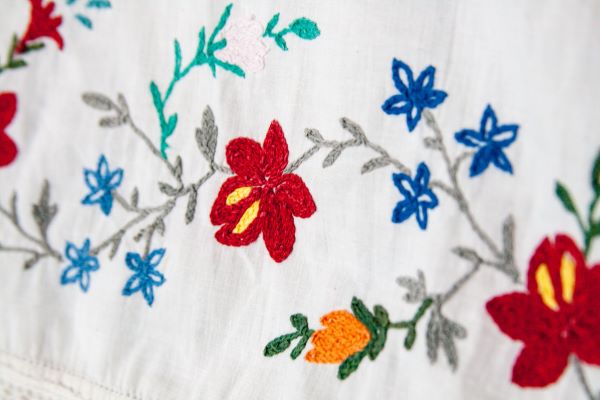
While rushnyky were traditionally made for specific rituals, they have experienced a revival in contemporary Ukrainian culture. They are now often used in modern ceremonies, including weddings and national celebrations, and are cherished as symbols of Ukrainian identity and heritage. They inspire contemporary artists and designers such as Etnodim and Khrystyna Rachytska, who incorporate traditional motifs into modern fashion and art, ensuring the preservation and evolution of this unique art.
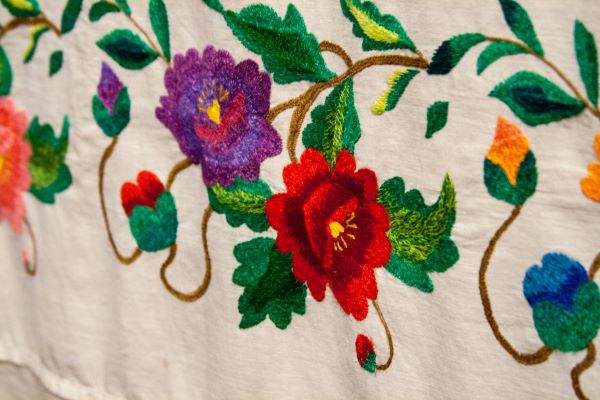
For me, rushnyky also hold a special meaning, because of a practice Asya followed. When sadness overwhelmed her, she embroidered a rushnyk, pouring out her feelings onto a piece of cloth. Some of these rushnyky were never finished, and I cherish them for the way they capture a moment in time. These days when I feel despair, I take out Asya’s rushnyky, run my hand over the embroidery and imagine my great-grandmother working on them under a craggy lilac shrub in the front of our house. I knew not to trouble her during those periods, but I also knew that they never lasted long. Asya found a way to channel her negative thoughts and create something beautiful. Her collection of rushnyky and her garden are a testament to the incredible resilience of this woman who lived through more calamities than should be allotted to an individual.
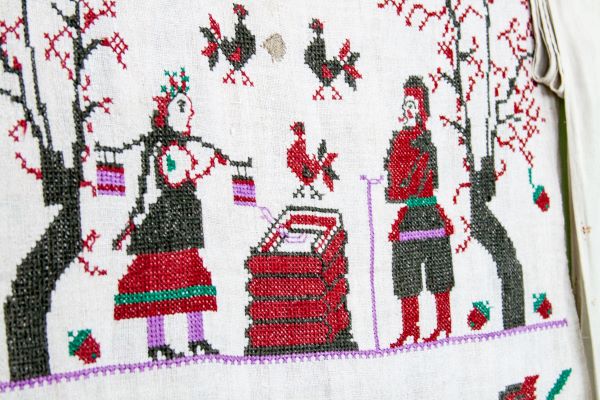
In summary, rushnyky are more than just embroidered cloths. They are vibrant expressions of Ukrainian culture, history, and identity. If you visit a Ukrainian church, take a look at the towels decorating the icons. They’re likely to be the hand-embroidered rushnyky contributed by the community. Their patterns and colors express their creators’ dreams, aspirations, aesthetic sensibilities and hopes.
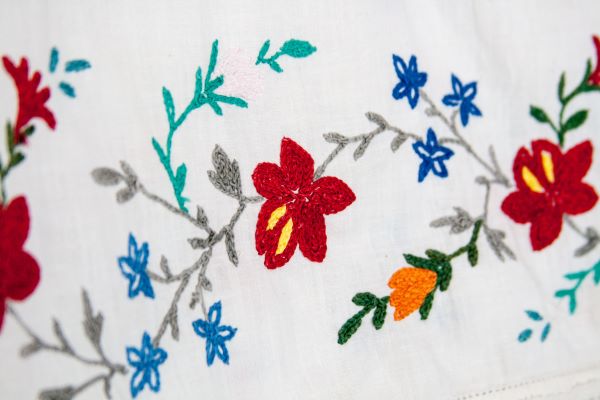
Most of the photos in the article were taken at a small rushnyk museum outside of Poltava. The Reshetylivka Rushnyk Museum is another fascinating place to learn about the history of this traditional cloth, while the Ivan Honchar Museum in Kyiv holds some of the oldest rushnyky in Ukraine.
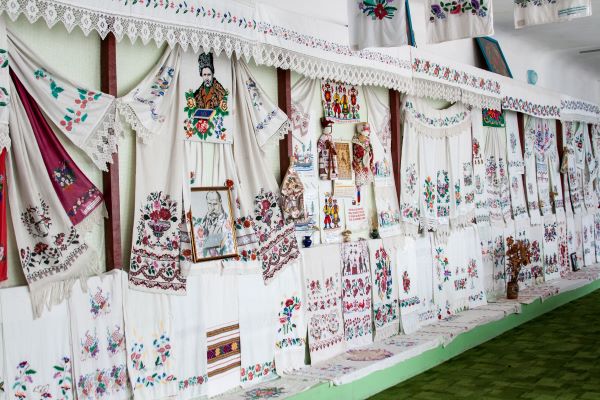
Photography by Bois de Jasmin

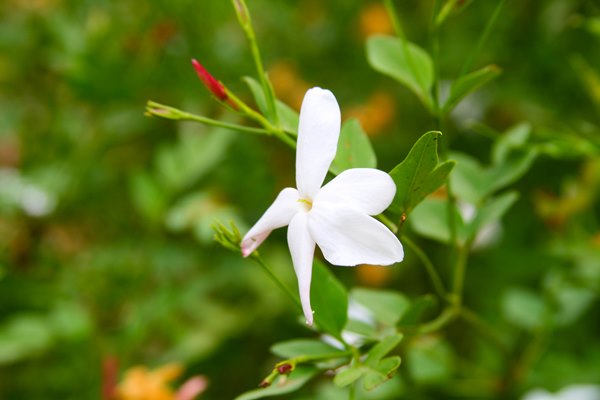
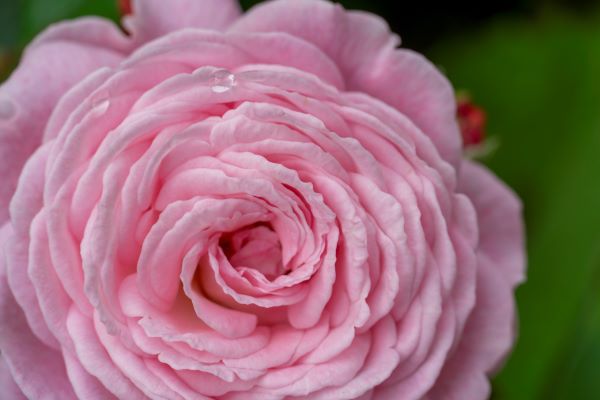
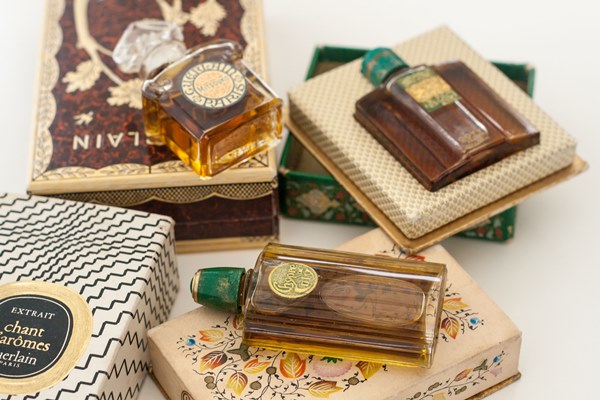








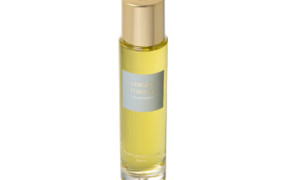


12 Comments
Camilla: I thoroughly enjoyed reading your article. I always like how you combine personal stories and broader themes. The same reason I really liked your book. I wish I could buy a Ukrainian rushnyk to keep at home. June 14, 2024 at 10:10am
Victoria: Thank you very much.
You can try looking for a rushnyk on Etsy. A number of Ukrainian artisans have shops there. June 14, 2024 at 11:59am
Annie: Beautiful! I love the last photo with different rushnyky together. It must have looked so pretty! June 14, 2024 at 10:37am
Victoria: It was such a lovely museum. A volunteer effort. June 14, 2024 at 11:58am
Nick: Your writing about Ukraine and Ukrainian culture is always so moving. I liked the idea of arts as cure. I paint when I don’t feel well and it helps me a lot. June 14, 2024 at 11:15am
Victoria: I also do that. Sometimes I paint, cook or practice calligraphy. It all helps. June 14, 2024 at 11:58am
Aurora: It was such a treat to learn more about this traditional art and to think that they hark back to animist beliefs. I remember also the white on white embroidery from Poltava in another post, very delicate and pretty. Do you use some of Asya’s rushnyky in your home in Belgium? June 15, 2024 at 1:21pm
Victoria: I do! I hang them on the walls and use them mostly for decoration. The simple ones I use for my daily chores, but I admit that I’m very careful with them. 🙂 June 18, 2024 at 2:47am
Maggiecat: What a wonderful article – thank you for sharing this beautiful tradition with us! June 15, 2024 at 8:12pm
Victoria: My pleasure. I’m glad that you enjoyed it. June 18, 2024 at 3:06am
ALICE: Thank you Victoria for this article. Embroidery is so profound and linked to people stories.
My grand-mother was a dressmaker and embroiderer. Even I’m not a professional, I like to embroider in order to bless people. June 18, 2024 at 4:02am
Victoria: It is so true. I don’t embroider much these days, but I treasure the embroidered pieces I have. June 18, 2024 at 4:22am